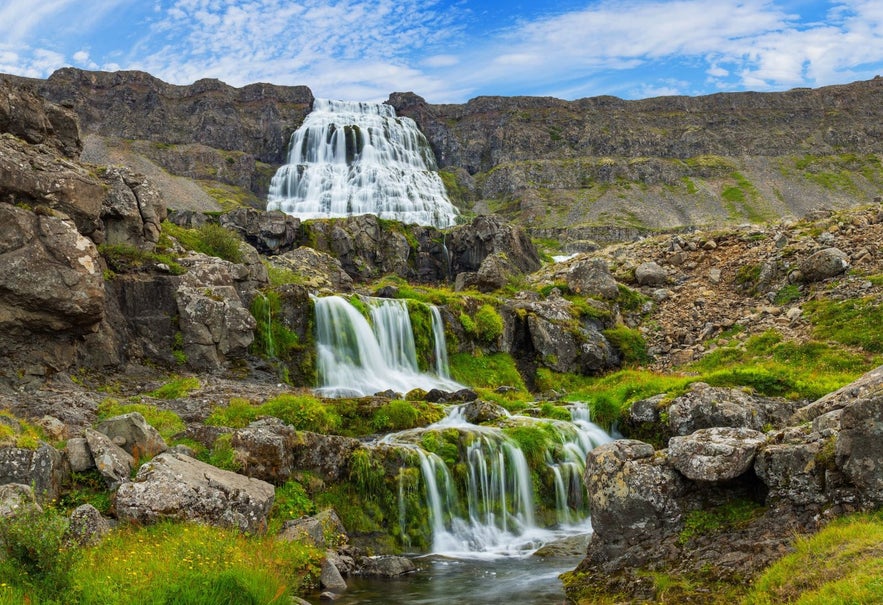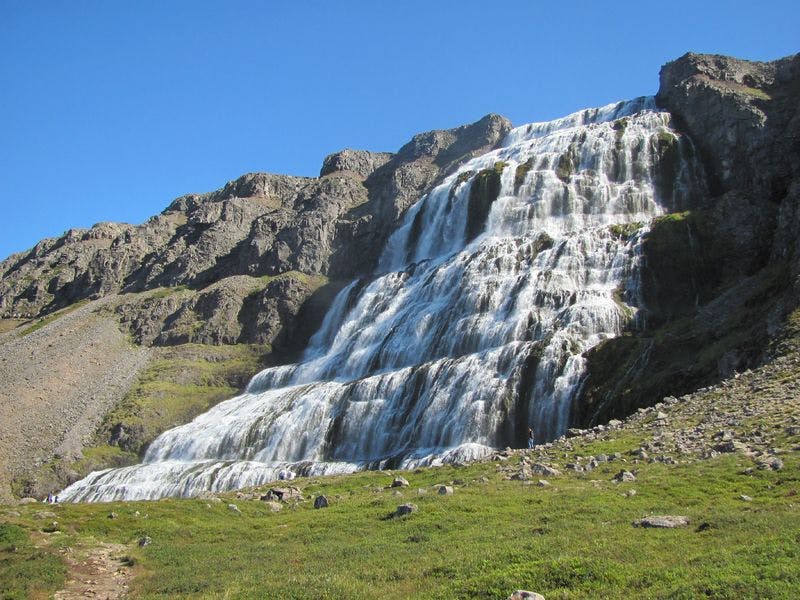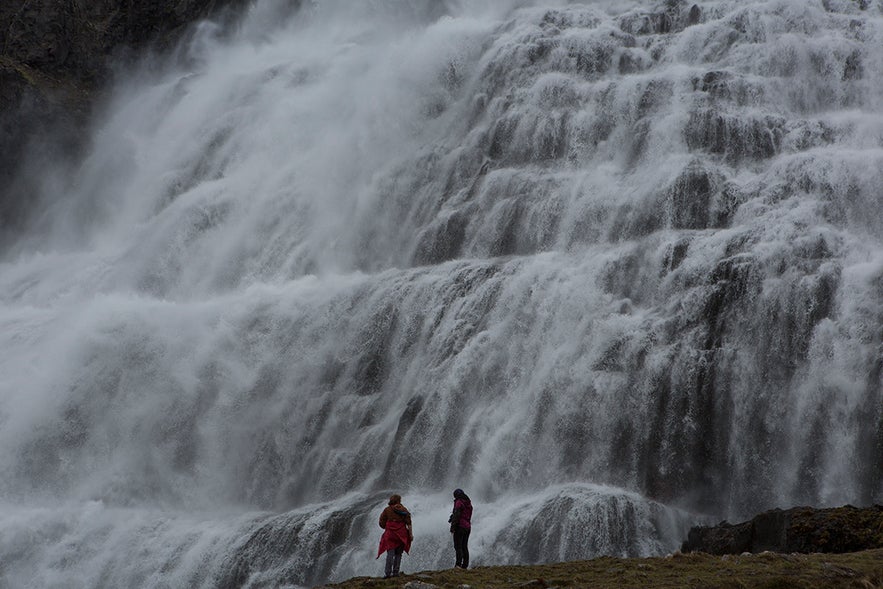
このエリアは、アイスランドの西フィヨルドツアーで巡ることができます。
ディンヤンディは、自然を愛する旅行者や写真愛好家に特に人気があり、さまざまな角度からこの壮大な自然の造形美を撮影できます。
私たちのコンテンツが信頼できる理由
Guide to Icelandは、アイスランドで最も信頼されている旅行プラットフォームで、毎年何百万人もの旅行者をサポートしています。すべてのコンテンツは、アイスランドを熟知した現地の専門家によって執筆・監修されています。正確で最新、信頼できる旅行情報をお届けしますので、安心してご利用ください。
地理情報
ディンヤンディは、ディンヤンディスヴォグル湾やアルナルフィヨルズル(Arnarfjörður)フィヨルドの近くに位置しています。このエリアは、豊かな野鳥、壮大な自然の景観、美しい海岸線で広く知られています。
「ウェストフィヨルドの宝石」とも呼ばれるディンヤンディ(別名フィヤットルフォス)は、合計約100メートルの高さから台形状に流れ落ちます。滝の上部は幅30メートル、下部は60メートルにもなります。
夏の間、ディンヤンディの水量は毎秒最大8立方メートルに達しますが、冬には毎秒1立方メートルほどに減少します。
滝の頂上からディンヤンディを眺めたい方は、崖沿いに約200メートルのハイキングコースを登ることができます。その途中には、ヘイスタヒャッラフォス、ストロンプグリュフラフォス(ストロンプル)、ゴングマンナフォス、フリースヴァズフォス・クヴィスラルフォス、フンダフォス、バイヤルフォス(ショアルフォス)という7つの小さな滝が連なっています。
1996年、ボランティアによってディンヤンディの頂上まで続く岩道が整備され、ハイキングはわずか15分ほどで楽しめるようになりました。
ディンヤンディへの行き方

西フィヨルド地方へ行くには、レンタカーを利用して自分で運転するのが最もおすすめです。ディンヤンディはアイスランドの首都レイキャビクから約363キロ離れており、訪れるにはある程度の時間と計画が必要です。
また、リングロードやウェストフィヨルドを巡るガイド付きツアーに参加することもできます。バスやスーパージープで、経験豊富なガイドが運転を担当してくれるので安心です。
さらに、レイキャビク国内線空港からウェストフィヨルド地方の空港まで飛行機でアクセスすることも可能です。
ウェストフィヨルドは人里離れた場所ですが、混雑を避けて大自然を満喫したい方には大変魅力的なエリアです。多くの旅行者が足を運ばないため、手つかずの美しい景色と静けさが保たれています。
ディンヤンディ以外にも、ホルンストランディル自然保護区やラゥトラビャルグ断崖など見どころが豊富です。ホルンストランディルは国内で最も人口が少ない地域で、壮大なパノラマと多くのホッキョクギツネが生息しています。ラトラビャルグ断崖は、陸からパフィンを間近で観察できる絶好のスポットで、何万羽ものパフィンが巣作りをしています。
どちらの動物も保護されているため、人をあまり恐れず、数メートルの距離まで近づくことができます。
ウェストフィヨルドは人口が少ないものの、いくつかの主要な町があります。中でもイーサフィヨルズルはこの地域の中心都市で、観光や商業の拠点となっています。
1981年以降、ディンヤンディは国定記念物に指定されており、指定された遊歩道から外れないよう特に注意が必要です。アイスランドの植生は非常に繊細で、一度傷つくと回復に何十年もかかることがあります。写真以外は持ち帰らず、足跡以外は残さないよう心がけましょう。










